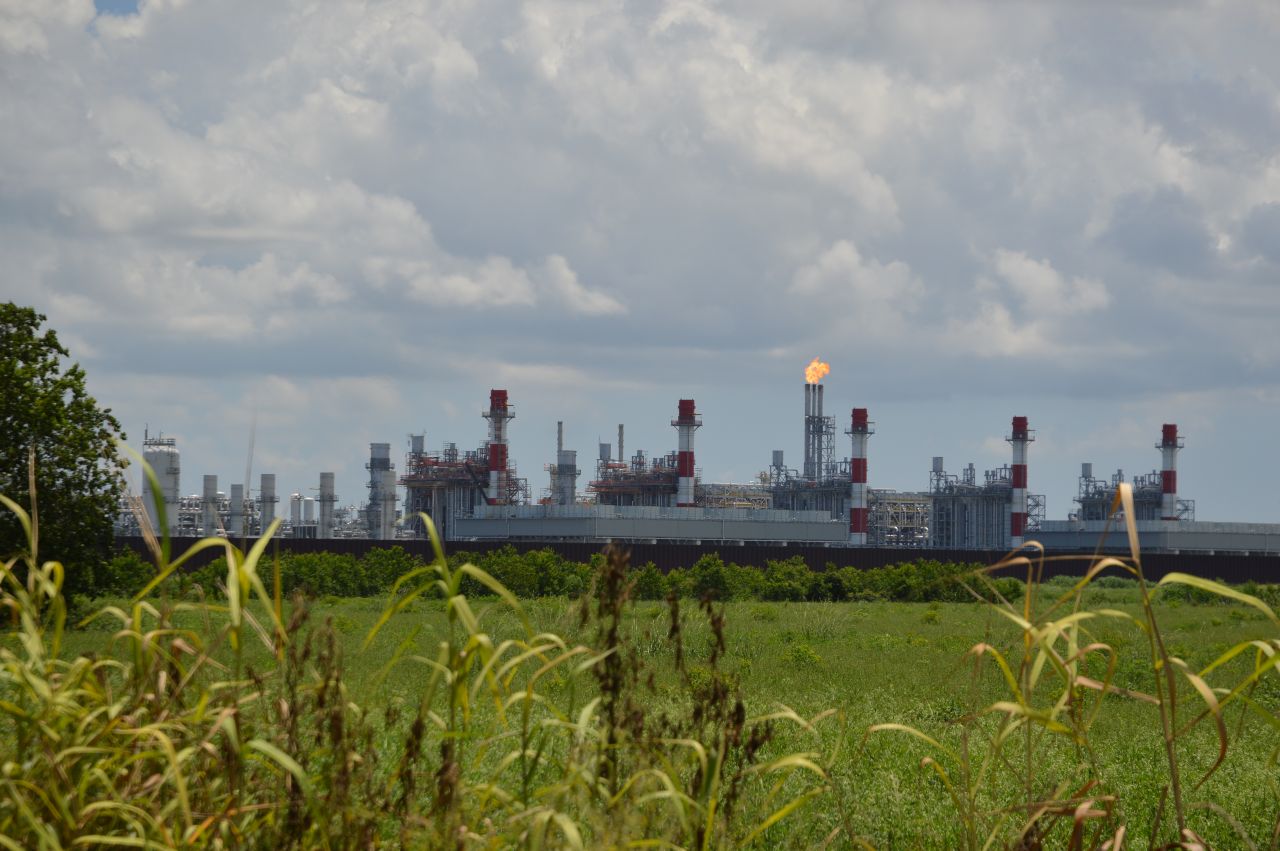Wetlands and waterways at risk in Trump Administration’s ‘energy emergency’ permit reviews

Louisiana is defined by its wetlands, which are among the most fertile cradles of life on the planet and important barriers that reduce the impact of deadly storms and flooding in New Orleans and other coastal communities.
But Louisiana’s wetlands are disappearing at a rate of one football field every 83 seconds, in part because of sea-level rise, erosion, and the oil and gas industry. So millions of taxpayer dollars are being invested in dozens of wetlands rebuilding projects in an effort to save the home of crabs, oysters, redfish and the culture of the Bayou State.
President Trump undermined that effort this month when – as part of his “energy emergency” executive order – his administration directed the U.S. Army Corps of Engineers to perform fast-track “emergency” reviews of 688 applications for permits to destroy wetlands or impact waterways across the country.
The online records of the Army Corps of Engineers shows that one of the “energy emergency” reviews is for a permit that would allow a company called Blue Marlin Offshore Port to damage or destroy 234 acres of fragile Louisiana wetlands as the company builds a 37-mile crude oil pipeline to an offshore oil terminal, with the pipe passing under Sabine Lake, on the Texas-Louisiana state line.
“The Trump Administration’s push for an ‘emergency’ review of wetlands destruction permits is a blatant attempt to sidestep environmental laws and fast-track fossil fuel projects at the expense of our wetlands and communities,” said Matt Rota, senior policy director for the Louisiana-based Healthy Gulf. “Rushing permits like the Blue Marlin Offshore Port pipeline under a manufactured ‘emergency’ undermines public oversight and threatens the Gulf Coast region's vital wetland ecosystems.”
The Bayou State and its wetlands produce about a third of all shrimp, crabs, fish, and oysters harvested in the U.S., with a value of approximately $1 billion annually, according to the National Oceanic and Atmospheric Administration.
Many of the Army Corps of Engineers permit applications targeted for “energy emergency” review by the Trump Administration are for energy-related projects, including for electricity transmission lines, pipelines, and power plants. These include the proposed destruction of 51 acres of wetlands south of Beaumont, Texas, to build a gas-fired power plant; and for a Corps permit to build a hotly-contested oil pipeline called Enbridge Line 5 under Lake Michigan.
But others on the federal list for fast-track review have little to do with energy. One project marked for “emergency” review is a proposal to destroy 145 acres of wetlands for a gold mine in a national forest in Idaho. Another is for a housing subdivision proposed by the Chevron oil company on environmentally sensitive lands in southern California.
“The Trump Administration appears to be using false claims of an ‘energy emergency’ to fast-track and rubber-stamp federal approvals for projects across the country that will be destructive to America’s wetlands, waterways, and communities,” said David Bookbinder, director of law and policy at the Environmental Integrity Project.
During his first day in office, President Trump signed an executive order, “Declaring a National Energy Emergency.” The order said (among other things) that the Army Corps of Engineers is directed to “facilitate the Nation’s energy supply” including by “emergency” permitting under the Clean Water Act for the filling of wetlands and dredging or building in waterways.
As a factual matter, there is no “energy emergency” in the U.S. – with oil and gas production soaring to record highs under the Biden Administration and solar and wind energy generation also growing rapidly, according to the U.S. Energy Information Administration.
Trump’s order on January 20 called for the accelerated production of crude oil, natural gas, uranium and coal – but not solar or wind. However, U.S. Army Corps of Engineers online records show that the agency is also selecting for “emergency” accelerated permit review some solar energy projects, such as the Bar C Solar Ranch near Fort Worth, Texas.
A larger number of the pending 688 permit applications listed on the Corps website on February 13 in the “energy emergency” review category were fossil-fuel related projects, including more than 100 pending permits for pipeline projects.
For large projects that require public notification, the “emergency” review could mean reduced or no opportunities for local residents to hear about and object to harmful permits, less environmental scrutiny by regulators, and weaker protections for wetlands in permits.
The Corps – which conducts wetlands and waterway impact reviews under Section 404 of the Clean Water Act – reviews permit applications for the discharge of dredge or fill materials into U.S. waters, including many wetlands. For large projects, the Corps requires public notification and the opportunity for public comment. The Corps then issues permits that often include conditions that limit environmental harm. A Corps document states these permits could be issued in as little as 48 hours.
However, under the “energy emergency” permit review directed by the Trump Administration, it is likely the fast-track process will shortchange environmental reviews for large projects, according to Bookbinder. An emergency review could reduce information about environmental impacts the applicant is required to provide for large projects or could curtail or even eliminate public notice and thus local communities’ ability to object to a damaging project. Ultimately, the emergency permitting process could restrict or even eliminate the Corps’ review of water pollution impacts, resulting in inadequate environmental protections for large projects.
“This end-run around the normal environmental review process is not only harmful for our waters but is illegal under the Corps’ own emergency permitting regulations,” said Bookbinder.
As an example of the chaos that has sometimes surrounds the Trump Administration, the Army Corps of Engineers posted a list of projects for "emergency" review on a public website -- and then quickly removed the list from public view after the Environmental Integrity Project sent a press release raising alarms about the issue that inspired articles in The New York Times and more than 50 other news outlets. A Corps spokesman said that the agency is now re-evaluating the list. "The data field will be added back once we refine which permit actions may be covered by the executive order," said Doug Garman, a spokesman for the Corps.
One of the permit applications marked for “emergency” review by the Corps earlier this week would allow a company called Enterprise Products Partners to impact about 101 acres of wetlands on the Gulf Coast near Freeport, Texas, to build a pipeline to an offshore oil terminal called Sea Port Oil Terminal (SPOT). Enterprise’s CEO recently cast doubt on whether SPOT would even go forward, citing a lack of interest from potential customers.
Another application in Texas is for Entergy Texas, Inc., to build a 754-megawatt gas-fueled power plant called the Legend Power Station south of Beaumont. This project requires a permit from the Corps because it would destroy 51 acres of wetlands. This power plant is being built to supply Sempra’s proposed Port Arthur LNG terminal with electricity.
Kristen Schlemmer, senior legal director for the Houston-based Bayou City Waterkeeper, said that this continued loss of wetlands along the Gulf Coast carries a heavy price for the people of the region.
“After Hurricane Beryl, Hurricane Harvey, and countless other unnamed rainstorms, those of us living across greater Houston and along the Texas coast have learned again and again how important wetlands are to us as a natural form of flood protection -- and what happens when wetlands are lost,” said Schlemmer. “Fast-tracking projects that destroy wetlands will rob our communities of critical wetland protections and place us at greater risk, without any benefits.”
In Northern Michigan, a Canadian energy company, Enbridge, needs a permit from the Army Corps of Engineers because it is proposing to build a tunnel and replace a portion of an aging crude oil pipeline – called Enbridge Line 5 -- that runs under Lake Michigan near the Straits of Mackinac.
The project is strongly opposed by local groups because of the company’s history of oil spills and because Lake Michigan is the source of drinking water for more than 10 million people.
The Enbridge Line 5 Pipeline is notorious in Michigan for a 2010 accident that was one of the worst inland oil spills in U.S. history. More than 20,000 barrels of heavy crude oil spilled into a tributary of the Kalamazoo River near Marshall, Michigan. The National Transportation Safety Board attributed the cause of the spill to “corrosion fatigue” in the pipeline, which was built in 1953.
“We just don’t want that threat to our lands and our waterways,” Robert Blanchard, chair of the Bad River Tribe in northern Michigan, said at an online press briefing covered by Wisconsin Public Radio. “If we were to have something happen right now that could really damage our wild rice crop for many, many years to come and maybe forever.”
In Idaho, the Trump Administration has marked for “energy emergency” review an application by Perpetua Resources Idaho to impact 145 acres of wetlands and 21 miles of streams in the Payette National Forest to dig a gold mine called the “Stibnite Gold Project.”
The project would include digging three open pit mines to extract gold, silver, and antimony, as well as roads and worker housing. An older mine operated at the site from 1899 to 1992, but closed 33 years go after polluting the East Fork of the South Fork of the Salmon River with arsenic and sediment.
“The Stibnite Gold Project is the equivalent of high-risk open-heart surgery for the South Fork Salmon River headwaters, and the watershed will be worse off as a result, not better,” said John Robison, Idaho Conservation League’s public lands and wildlife director.
Why might the Trump Administration consider the Stribnite mine project a priority? It is owned Perpetua Resources, which is controlled by John Paulson, a billionaire and major Republican donor who was on Trump’s short list to run the treasury department.















